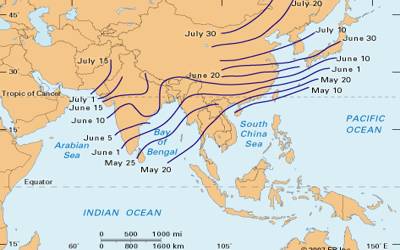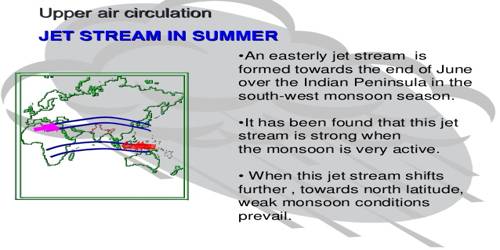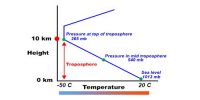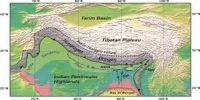Mechanism of Jet Streams and Upper Air Circulation in the Summer Season in Indian Subcontinent
Jet stream, narrow, swift currents or tubes of air found at heights ranging from 7 to 8 mi (11.3–12.9 km) above the surface of the earth. Jet streams form at the boundaries of contrasting air masses. When warm and cold air assembles, the difference in their air pressures as a result of their temperature differences causes air to flow from higher pressure to lower pressure, thus creating high winds. Because the differences in temperature, and therefore, pressure, are very large, so too is the strength of the resulting winds.

The pattern of pressure and winds as mentioned above is formed only at the level of the troposphere. An easterly jet stream flows over the southern part of the Peninsula in June and has a maximum speed of 90 km per hour (Figure). In August, it is confined to 15°N latitude, and in September up to 22°N latitudes. The easterlies normally do not extend to the north of 300 N latitude in the upper atmosphere.
A Summary of the Jet Stream
- Jet streams are strong upper air currents circumnavigating the globe.
- There are two main jets: the polar jet and the subtropical jet.
- Jet streams can fluctuate in strength between 100-200mph.
- The jet stream meanders in waves.















